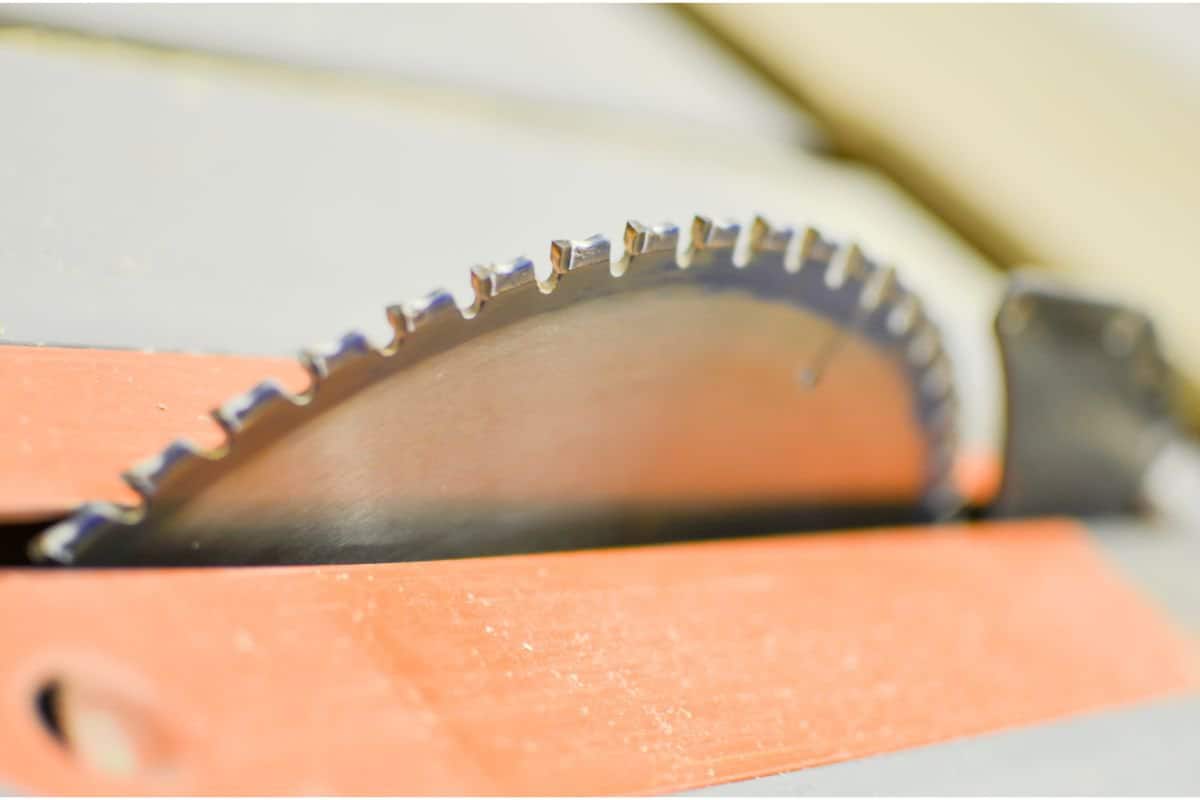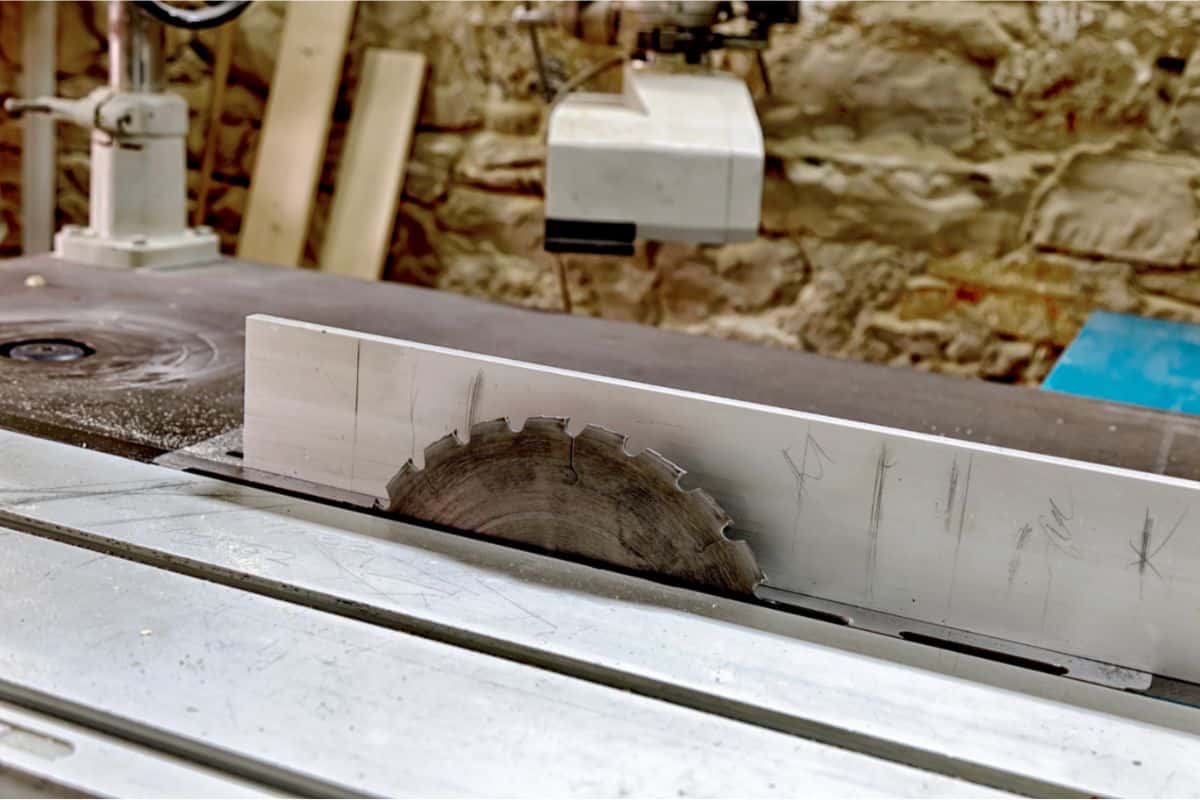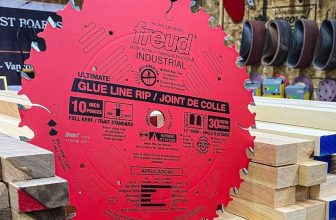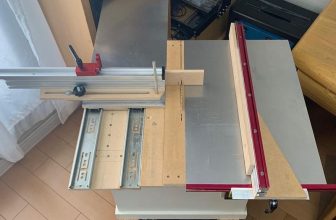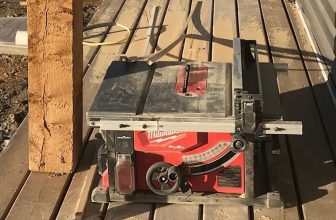What Is Table Saw Used For?
A cabinet table saw is a power tool used to cut wood. The saw consists of a circular saw blade that is mounted on an arbor, which is driven by an electric motor. The blade protrudes through the surface of a table, which the workpiece is placed against. The workpiece is then moved back and forth over the blade, which results in a cut. In this article, we will discuss the ways of using table saws.
Contents
Benefits of Having a High-Quality Table Saw Blade
A high-quality table saw blade is an important tool in any woodworker’s arsenal and is the most important factor of what can a table saw do. Here are some of the benefits of using a high-quality blade:
- Accuracy – A high-quality blade will cut more accurately than a cheap blade. This is important for tasks like making cabinet doors or cutting tenons.
- Durability – A high-quality blade will last much longer than a cheap blade. This means you won’t have to replace the blade as often, which saves you time and money.
- Safety – A high-quality blade is less likely to break or shatter than a cheap blade. This reduces the risk of injury.
- Versatility – A high-quality blade can be used for a wide range of tasks, from cutting thin strips of wood to making complex joints.
- Quality – A high-quality blade is made of high-quality materials, which means it will cut cleanly and smoothly.
Ways To Use the Table Saw
So, what is the table saw used for? Here’s the list!
1. Crosscutting
Another common use for a table saw is crosscutting. This is when you cut a board at a specific angle. You can set the saw to the angle you need and then hold the board against the fence while you crosscut it. When you are crosscutting, you should always use a miter gauge. This is a piece of metal that slides in the table saw’s miter slot. The miter gauge helps you to position the board at the correct angle before you cut it.
2. Ripping
One of the most common use of table saw is to rip boards. This is when you cut a board to a specific width. You can set the saw to the width you need and then hold the board against the fence while you rip it. Ripping is done by placing the board on the table with the good side down. You should then position the fence so that it is the same distance from the blade as the width of the board you are cutting. Push the board into the blade while keeping it against the fence. You should then use a push stick to help you push the board through the blade.
3. Bevel Cutting
You can also use a table saw to bevel cut boards. This is when you cut a board at an angle that is not 90 degrees. You can set the saw to the angle you need and then hold the board against the fence while you bevel cut it.
4. Dado Cutting
You can also use a table saw to cut dados. This is when you cut a groove in a board. You can set the saw to the width and depth of the groove you need and then hold the board against the fence while you cut it. When you are dado cutting, you should always use a dado blade. This is a blade that has a number of teeth that are set at a specific angle. The dado blade helps you to cut the groove accurately.
5. Kerfing
This is when you cut a series of slots in a board. You can set the saw to the width and depth of the slots you need and then hold the board against the fence while you cut it. Kerfing is done to create a joint that is stronger than a butt joint. When you are kerfing, you should always use a saw blade that has a small number of teeth. This is because you want the blade to cut the wood quickly. A saw blade with a lot of teeth will not cut the wood quickly and will result in a poor quality joint.
6. Cutting Joints
Table saw is also used for cutting joints. A joint is a connection between two pieces of wood. There are a number of different types of joints that you can cut with a table saw. The most common joints are the miter joint and the butt joint. You can use a miter gauge to help you cut the miter joint accurately. You can also use a doweling jig to help you drill the holes for the dowel pins. When you are cutting the butt joint, you should use a straight edge to help you position the boards correctly.
7. Rabbets And Grooves
Rabbets and grooves are two of the most common cuts made on a table saw. A rabbet is a cut that is made perpendicular to the edge of a board, while a groove is a cut that is made parallel to the edge of a board.
Rabbets are commonly used to join two boards together, while grooves are commonly used to hold a piece of wood in place. There are a number of different ways to make rabbets and grooves on a table saw, and the method that you use will depend on the specific application that you are using them for.
The most basic way to make a rabbet or groove is to use a miter gauge. The miter gauge is a tool that is used to guide the workpiece through the saw blade. You can use the miter gauge to make a rabbet or groove that is either square or rectangular in shape.
Another way to make a rabbet or groove is to use a dado blade. A dado blade is a blade that is designed to cut a groove in a workpiece. The dado blade is mounted in the saw blade housing, and the workpiece is passed over the blade.
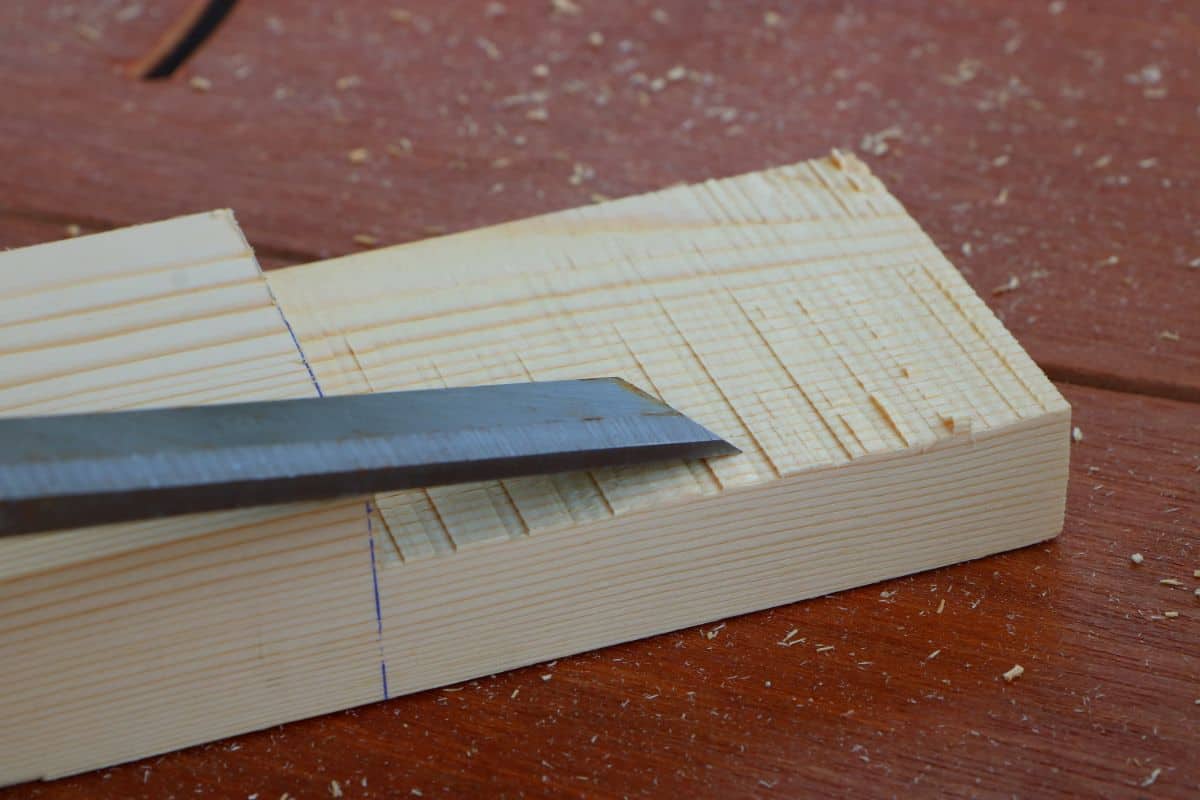
FAQ
When to use a table saw?
Table saws are most commonly used to make straight cuts, but they can also make angled cuts and miter cuts. They are especially useful for cutting large pieces of wood.
Are table saws worth it?
It depends on what you need it for. Table saws can be expensive, but they are often worth the investment if you do a lot of woodworking.
What cuts can you make with a table saw?
Table saws can make straight cuts, angled cuts, and miter cuts.
Conclusion
A table saw is an extremely versatile power tool that can be used for a wide variety of projects. Table saw uses are: ripping lumber, crosscutting, dadoes, rabbets, and more. With the right blades, a table saw can also be used to cut curves and intricate shapes.
Also read:
- What Is Rip Capacity On a Table Saw
- How To Change a Blade On a Table Saw
- How To Cut Angles With a Table Saw
References
- 5 BASIC WOODWORKING CUTS YOU NEED TO KNOW HOW TO MAKE
https://woodworkingformeremortals.com/5-basic-woodworking-cuts/ - Dado (joinery)
https://en.wikipedia.org/wiki/Dado_(joinery) - Miter gauge
https://en.wikipedia.org/wiki/Miter_gauge
“A good tool stays with you for many years and choosing carefully ensures the job is done right, your work is neat, and the tool is always a pleasure to use”
